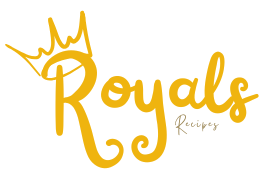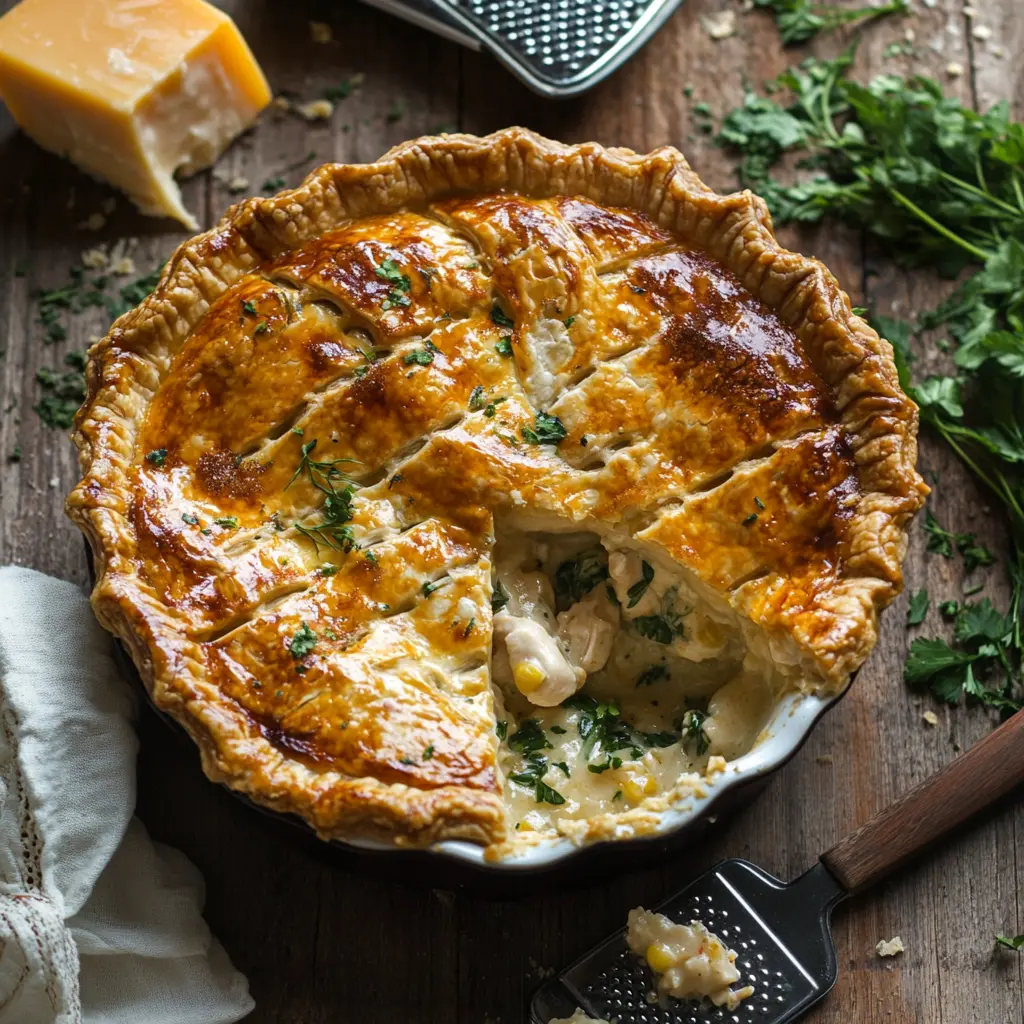Introduction
How Much Salt is in Cheddar Chicken Pot Pie? Cheddar chicken pot pie is the ultimate comfort food, combining a rich, creamy filling, crisp vegetables, tender chicken, and the unmistakable sharpness of cheddar cheese. However, one of the most common questions home cooks face is how much salt to add to this dish. The answer depends on the ingredients used, like the saltiness of the cheese and broth, and your personal taste preferences.
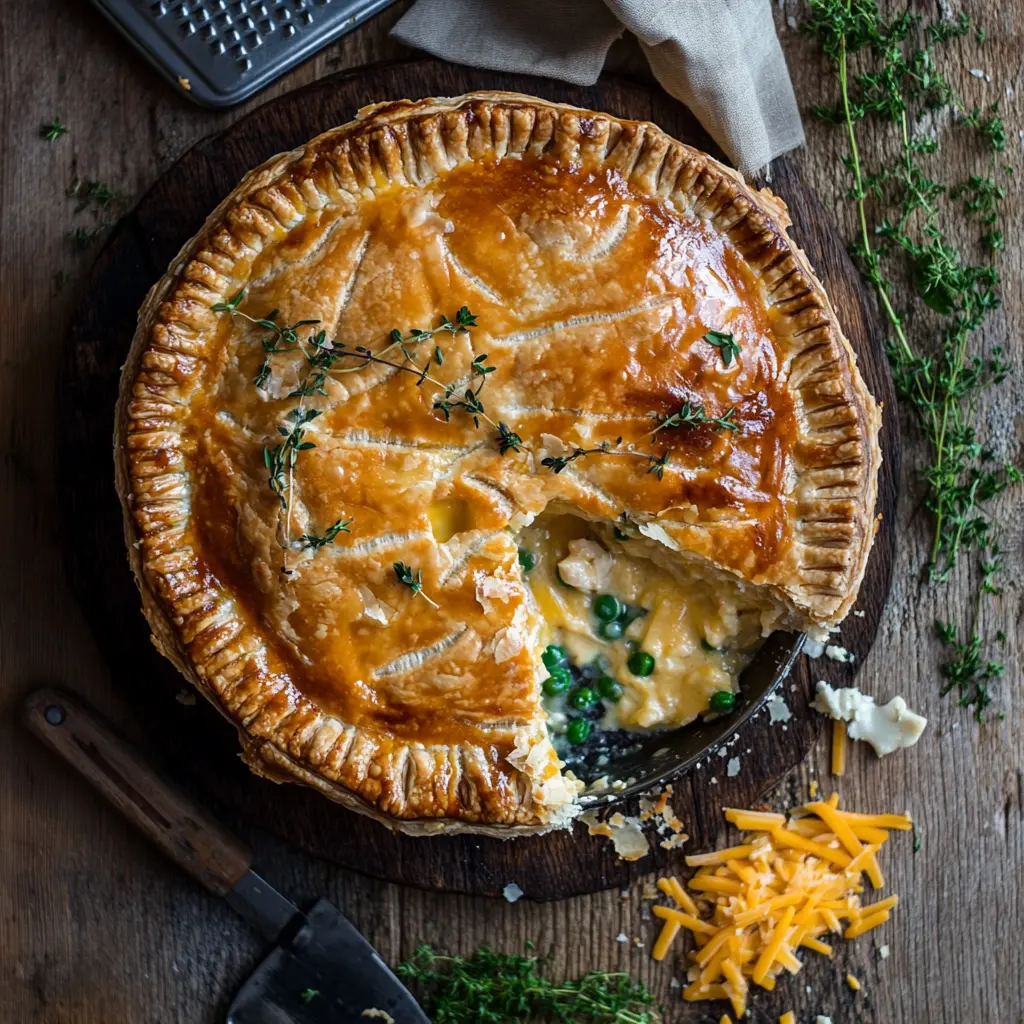
Salt is more than just a seasoning—it’s the ingredient that brings all the flavors of your pot pie together. Too little can make the dish taste bland, while too much can overpower the delicate balance of chicken, cheddar, and vegetables. This guide dives deep into the role of salt in cheddar chicken pot pie, offering tips, a detailed recipe, and strategies to achieve the perfect flavor.
By the end of this article, you’ll know exactly how to season your cheddar chicken pot pie like a pro, ensuring a dish that’s both savory and satisfying. Let’s explore the art of salt in this beloved recipe.https://royalesrecipes.com/chicken-pot-pie-the-ultimate-guide/
Understanding Salt in Cheddar Chicken Pot Pie
Salt is a critical seasoning that enhances the flavors of the chicken, vegetables, cheese, and crust. However, cheddar cheese and store-bought chicken broth can already contain significant amounts of sodium. The goal is to balance these elements to achieve a perfectly seasoned dish.
Factors Influencing Salt Amount
- Cheddar Cheese: Extra-sharp or aged cheddar is saltier than mild cheddar.
- Chicken Broth: Store-bought broths often contain high sodium unless you opt for low-sodium or homemade broth.
- Personal Preference: Some people prefer a milder flavor, while others enjoy a more pronounced salty taste.
How Much Salt Should You Use?
Here’s a breakdown of salt recommendations for cheddar chicken pot pie components: https://www.eatthismuch.com/calories/homemade-chicken-pot-pie-1742630
- For the Filling:
- Chicken and Vegetables: Start with 1/2 teaspoon of salt for sautéing vegetables like onions, carrots, and celery. Adjust based on the salt content of the broth and cheese.
- Sauce: Add 1/4 to 1/2 teaspoon of salt when making the roux (butter and flour base) and blending it with chicken broth and milk. After adding the cheddar, taste and adjust with an additional 1/4 teaspoon if necessary.
- For the Cheese:
- If using sharp or extra-sharp cheddar, reduce the salt in the filling to avoid oversalting. With mild cheddar, you may need an extra pinch.
- For the Crust:
- If making a homemade pie crust, include 1/4 to 1/2 teaspoon of salt in the dough. Store-bought crusts are pre-seasoned, so no additional salt is needed.
- Final Adjustments:
- Taste the filling before assembling the pie. The total salt amount for a cheddar chicken pot pie serving 6 should be around 1 to 1.5 teaspoons, including all components.
Cheddar Chicken Pot Pie Recipe
Ingredients
- Filling:
- 2 cups cooked, shredded chicken
- 1 cup sharp cheddar cheese, shredded
- 1/2 cup frozen peas
- 1/2 cup diced carrots
- 1/2 cup diced celery
- 1/2 cup diced onion
- 4 tablespoons unsalted butter
- 4 tablespoons all-purpose flour
- 1 3/4 cups chicken broth (low-sodium recommended)
- 1/2 cup milk (or heavy cream)
- 1 teaspoon salt (divided as per instructions)
- 1/2 teaspoon ground black pepper
- 1/2 teaspoon garlic powder
- 1/2 teaspoon dried thyme (optional)
- Crust:
- 1 store-bought or homemade double pie crust
- 1/4 teaspoon salt (if making homemade crust)
Instructions
- Prepare the Filling:
- Melt butter in a large skillet over medium heat. Add diced onions, carrots, and celery. Sauté with 1/2 teaspoon salt until softened, about 5 minutes.
- Stir in flour and cook for 1-2 minutes to form a roux. Gradually whisk in chicken broth and milk. Add garlic powder, thyme, and black pepper.
- Simmer until thickened, about 3-5 minutes. Stir in shredded chicken, peas, and cheddar cheese. Taste and adjust salt with 1/4 teaspoon at a time, if needed.
- Prepare the Crust:
- Roll out one pie crust to line a 9-inch pie dish. Pour the filling into the crust.
- Top the Pie:
- Roll out the second crust and place it over the filling. Trim the edges, crimp to seal, and cut small slits for steam to escape.
- Bake:
- Preheat the oven to 400°F (200°C). Brush the top crust with an egg wash (1 egg beaten with 1 tablespoon water). Bake for 30-35 minutes or until the crust is golden brown.
- Cool and Serve:
- Allow the pie to cool for 5-10 minutes before serving.
Tips for Perfect Salt Balance
- Taste as You Go: Always taste the sauce and filling before assembling the pie. Adjust salt incrementally.
- Opt for Low-Sodium Ingredients: Use low-sodium chicken broth and unsalted butter to have better control over salt levels.
- Cheese Choice Matters: If using extra-sharp cheddar, reduce salt in the filling by 1/4 teaspoon.
- Salt in Crust: If your filling is well-seasoned, use less salt in the crust to avoid overpowering the dish.
FAQs About Salt in Cheddar Chicken Pot Pie
1. Can I Use Unsalted Cheese?
Can I Use Unsalted Cheese in Cheddar Chicken Pot Pie?
Yes, you can absolutely use unsalted cheese in cheddar chicken pot pie! While it’s less common than salted cheese varieties, unsalted cheese provides greater control over the overall saltiness of your dish. Here’s how using unsalted cheese can affect your recipe and how to adjust for it:
Why Use Unsalted Cheese?
- Control Over Salt Levels
Unsalted cheese allows you to add salt incrementally throughout the cooking process, ensuring that the flavors are well-balanced without risking oversalting. - Dietary Preferences
Unsalted cheese is a great option for individuals who need to monitor their sodium intake for health reasons. It’s also ideal for those who prefer a milder, less salty flavor. - Complementing Other Ingredients
Using unsalted cheese ensures that other naturally salty ingredients, like chicken broth or the pie crust, don’t result in a dish that’s overly seasoned.
How to Adjust the Recipe for Unsalted Cheese
- Season the Sauce
Add 1/4 teaspoon more salt than usual to the roux and sauce base when using unsalted cheese. This ensures that the filling maintains its flavor without relying on the cheese for seasoning. - Taste and Adjust
After mixing in the unsalted cheddar cheese, taste the filling. Add an extra pinch of salt (around 1/8 to 1/4 teaspoon) as needed. - Monitor Other Ingredients
If using a salted pie crust or regular chicken broth, reduce additional salt to avoid overpowering the dish. For low-sodium or homemade broth, you may need to increase salt slightly.
Flavor Considerations
Unsalted cheese tends to have a cleaner, milder flavor than its salted counterpart. While this can be beneficial in recipes with bold, complex flavors, you may want to enhance the dish with complementary seasonings like garlic powder, thyme, or a small dash of nutmeg to round out the flavor profile.
Pro Tip
For a cheesy punch without adding too much salt, mix unsalted cheddar with a small amount of salted or sharp cheddar. This creates a balanced flavor while keeping the salt levels in check.
Using unsalted cheese in cheddar chicken pot pie is a simple adjustment that can enhance your control over the recipe and make the dish suitable for various dietary needs. Just remember to taste frequently and adjust seasonings incrementally for the best results.
2. What if I Oversalt the Filling?
What if I Oversalt the Filling in Cheddar Chicken Pot Pie?
Oversalting the filling for your cheddar chicken pot pie can feel like a disaster, but it’s an easy mistake to fix. Rather than starting over, there are several strategies you can use to balance out the saltiness and rescue your dish.
1. Dilute the Filling
Adding more unsalted ingredients to the filling is one of the simplest ways to fix oversalting. Here’s how:
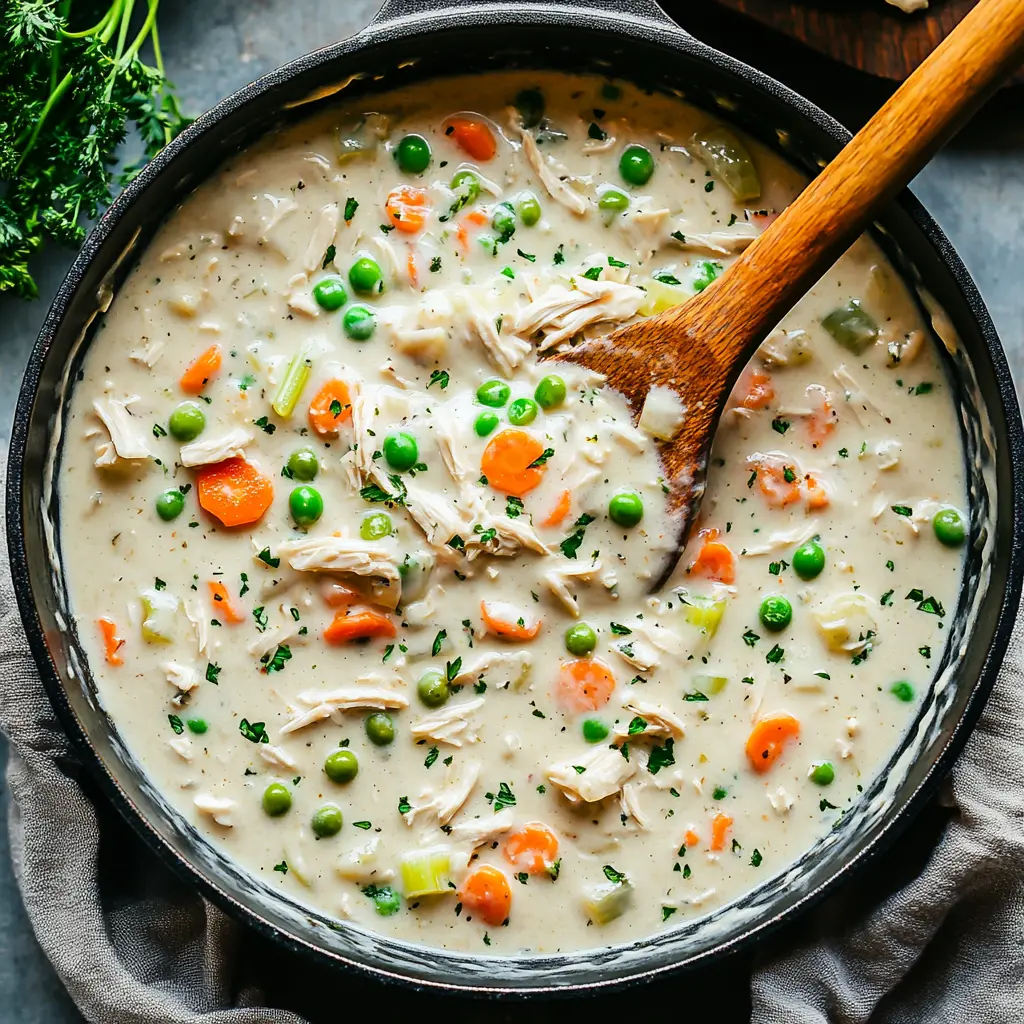
- Add More Vegetables: Stir in extra carrots, peas, celery, or other unsalted vegetables to balance the salt concentration. Dice the vegetables finely to blend seamlessly with the filling.
- Add More Chicken: If you have extra cooked, shredded chicken, add it to the filling to dilute the saltiness. Ensure the chicken is unseasoned or lightly seasoned.
- Add Unsalted Broth: Pour in unsalted chicken broth or even water, a few tablespoons at a time, to thin out the filling and reduce the overall salt content.
2. Introduce Cream or Dairy
Creamy ingredients can mellow the sharpness of salt and create a richer texture:
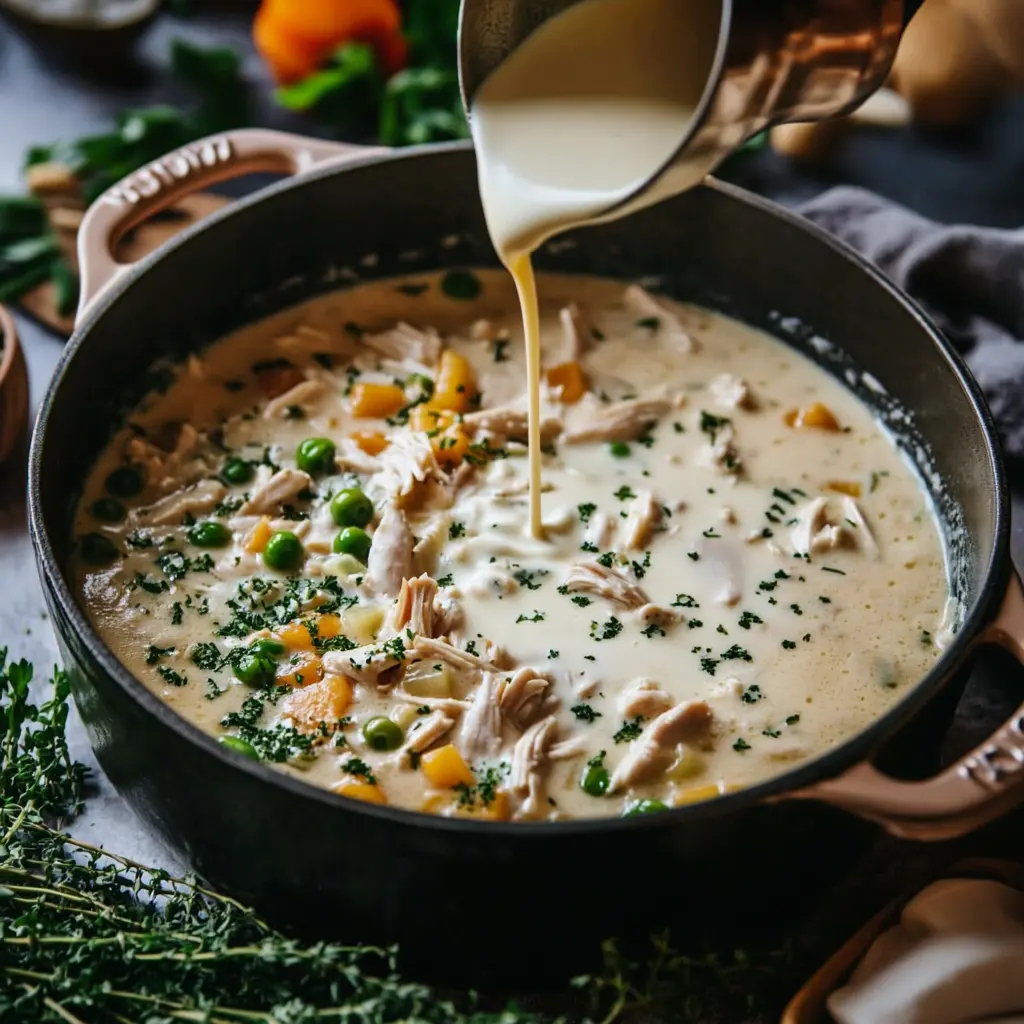
- Heavy Cream or Milk: Add a splash of heavy cream, milk, or half-and-half to the sauce. This softens the saltiness and enhances the filling’s creaminess.
- Unsalted Cheese: If the filling is already cheesy, incorporate shredded unsalted cheddar to balance the flavor without increasing the salt content.
3. Add Starchy Ingredients
Starches are excellent at absorbing excess salt:
- Mashed Potatoes: Blend a small amount of unsalted mashed potatoes into the filling. They’ll thicken the mixture and neutralize some of the salt.
- Rice or Pasta: If you’re open to creative variations, mix in a small amount of cooked, unsalted rice or pasta. These ingredients soak up salt effectively.
4. Use Acidity to Counteract Salt
Acidic ingredients can balance salty flavors by distracting the palate:
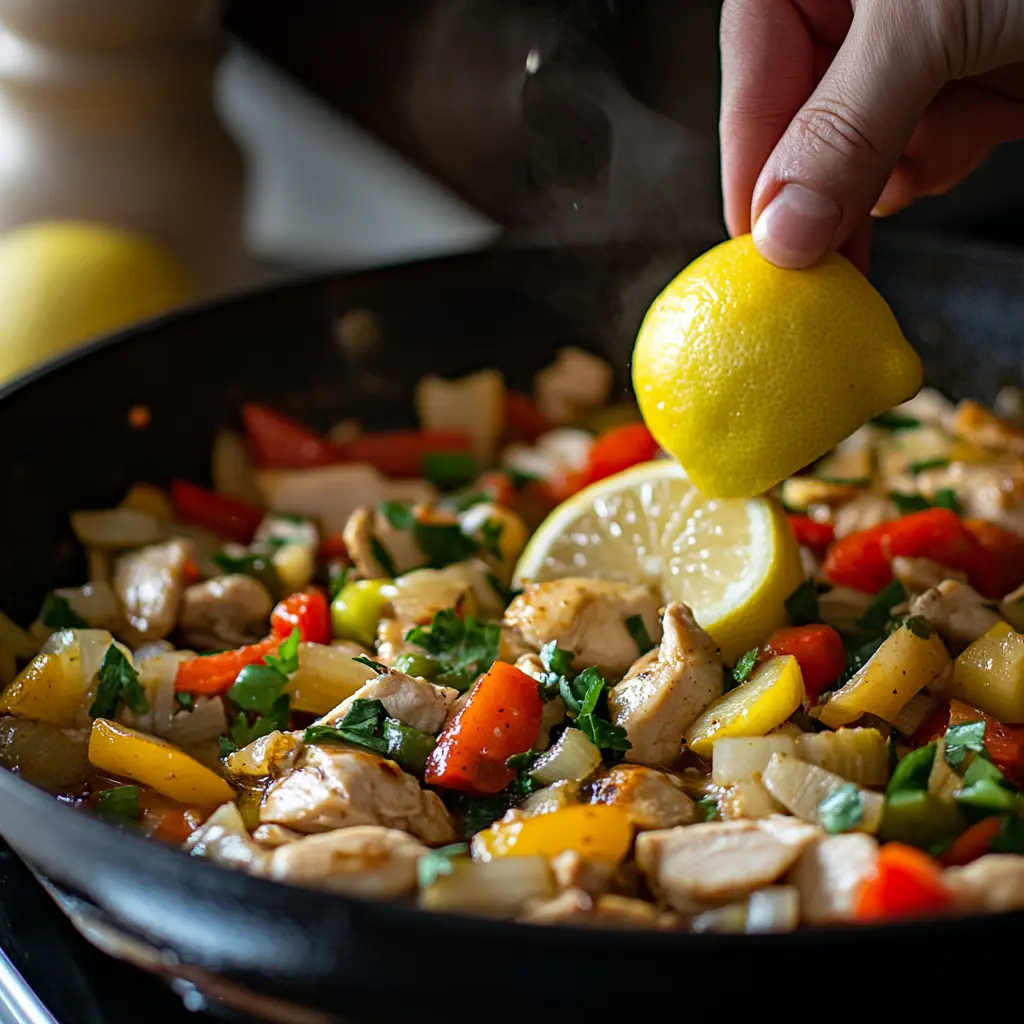
- Lemon Juice: Add a few drops of freshly squeezed lemon juice to the filling. Be cautious and add incrementally to avoid making the dish too tangy.
- Vinegar: A teaspoon of white vinegar, apple cider vinegar, or rice vinegar can balance saltiness while adding complexity to the flavor.
5. Balance with Sweetness
A small amount of sweetness can mask excess salt:
- Sugar: Stir in a pinch of sugar, honey, or maple syrup to counteract the saltiness. Be careful not to make the filling noticeably sweet.
- Sweet Vegetables: Add finely chopped or puréed sweet vegetables like butternut squash or sweet potatoes.
6. Serve with Low-Sodium Side Dishes
If fixing the filling isn’t feasible, balance the meal with low-sodium side dishes:
- Unsalted Crust: Use an unsalted pie crust or a bland biscuit topping to minimize the overall saltiness of the pot pie.
- Plain Rice or Bread: Serve slices of the pot pie alongside plain rice or crusty bread, which will help offset the saltiness.
Pro Tip
Always taste as you season to prevent oversalting. If unsure, start with smaller amounts of salt and gradually increase as needed. When using salty ingredients like sharp cheddar or regular chicken broth, compensate by reducing added salt.
Final Note
Oversalting the filling for cheddar chicken pot pie doesn’t mean the dish is ruined. With a little creativity and these simple fixes, you can restore balance and serve a delicious, satisfying pot pie.
3. How Much Sodium Is in Store-Bought Broth?
Store-bought chicken broth can contain 800-1000mg of sodium per cup. Low-sodium varieties typically have around 300-400mg per cup.
Nutritional Overview of Cheddar Chicken Pot Pie
Cheddar Chicken Pot Pie is a hearty dish that combines savory ingredients in a rich, creamy filling topped with a flaky crust. However, its nutritional profile extends beyond its comforting taste. From calories to sodium levels, understanding the components of this dish can help you balance indulgence with health. In this section, we’ll delve into the nutritional aspects of Cheddar’s Chicken Pot Pie, focusing on what makes it a flavorful yet potentially high-sodium meal.
Sodium Content in Cheddar’s Scratch Kitchen Chicken Pot Pie
Cheddar’s Scratch Kitchen, a popular restaurant chain, serves a homemade chicken pot pie that contains approximately 1,104 milligrams of sodium per serving. This amount accounts for nearly 48% of the recommended daily sodium intake based on a 2,000-calorie diet. For individuals monitoring their salt intake, this can be a significant portion of their daily allowance.
What Contributes to the Sodium Levels?
Several ingredients contribute to the sodium content in Cheddar’s chicken pot pie:
- Chicken Broth: Typically used in the creamy filling, commercial broths are often high in salt.
- Prepared Pie Crust: Many pre-made crusts contain added sodium for flavor and preservation.
- Seasonings and Spices: The filling is usually seasoned with salt, enhancing the flavor of the chicken and vegetables.
- Cheese: If cheddar cheese is included in the recipe, it can significantly add to the sodium content.
How This Fits Into a Daily Diet
The American Heart Association recommends consuming no more than 2,300 milligrams of sodium per day, with an ideal limit of 1,500 milligrams for most adults. With 1,104 milligrams per serving, Cheddar’s chicken pot pie uses up a substantial portion of this limit, making it essential to balance other meals if you choose to indulge.
Conclusion: Mastering Salt in Cheddar Chicken Pot Pie
Achieving the perfect balance of salt in cheddar chicken pot pie is an art that can elevate this comforting dish to new heights. By understanding how individual ingredients contribute to the overall saltiness, you can create a pie that is rich, flavorful, and perfectly seasoned. The key lies in mindful seasoning—tasting as you go and adjusting incrementally.
Key Takeaways for Perfect Salt Balance
- Cheddar’s Role: Sharp or extra-sharp cheddar adds a burst of flavor but also contributes significant salt. Mild cheddar allows for more control over seasoning, making it a great choice if you prefer to fine-tune the salt content.
- Broth Awareness: Low-sodium chicken broth is your best friend when it comes to controlling salt levels. If using regular broth, reduce the salt in the filling by at least half.
- Layered Seasoning: Season each component of the dish separately—vegetables, sauce, and crust. This ensures an even distribution of flavor throughout the pie.
- Final Taste Test: Before assembling the pot pie, always taste the filling to ensure the flavors are well-balanced. A pinch of salt at the end can make all the difference.
- Avoiding Oversalting: If the filling ends up too salty, don’t panic! Dilute it with extra unsalted broth, cream, or vegetables to bring it back into balance.
